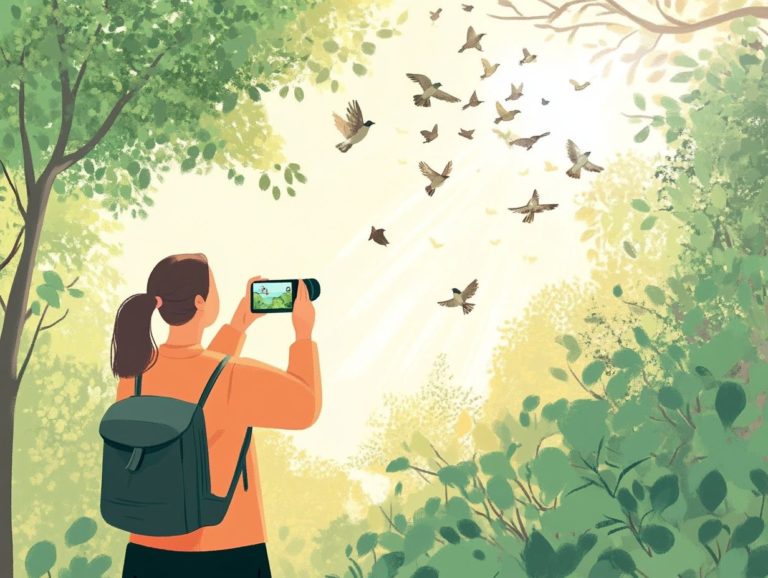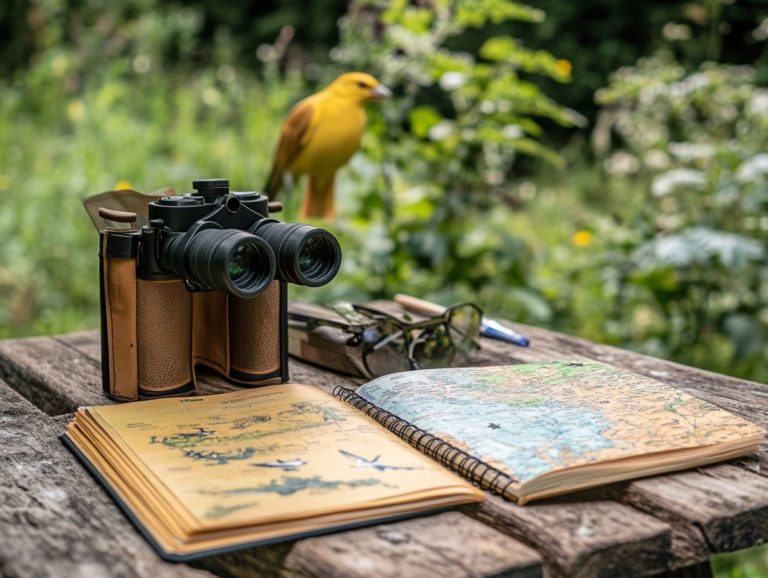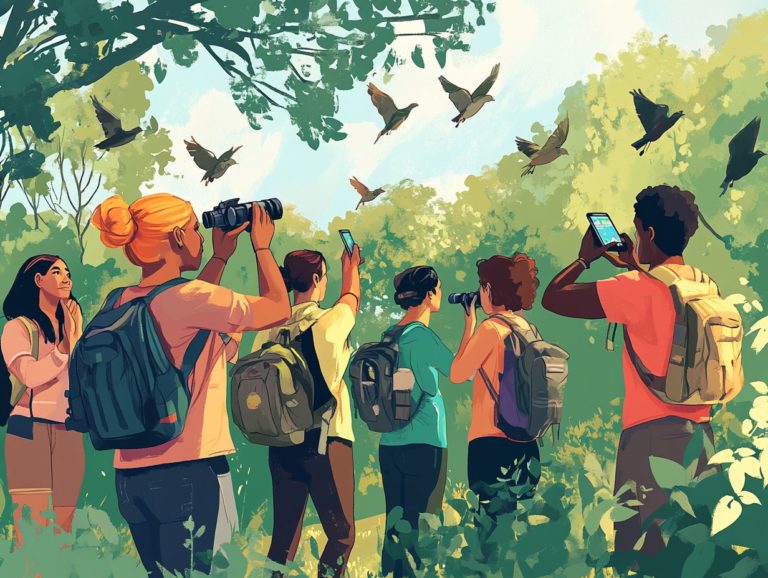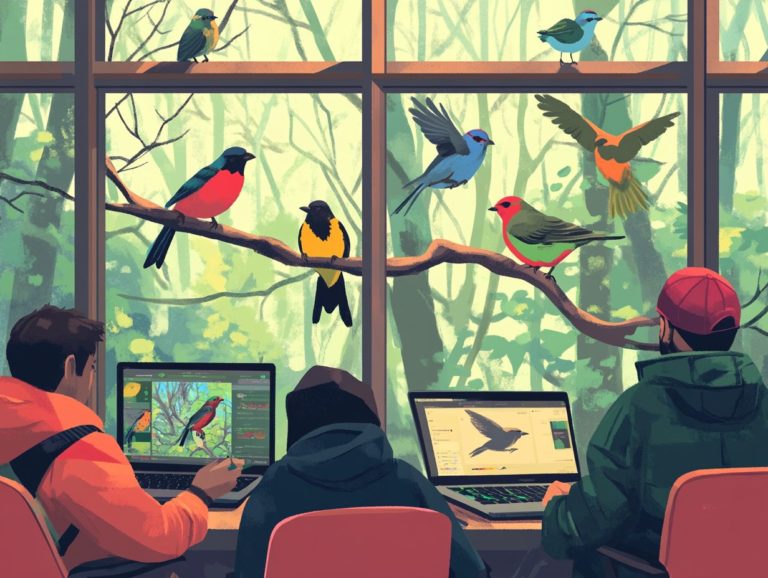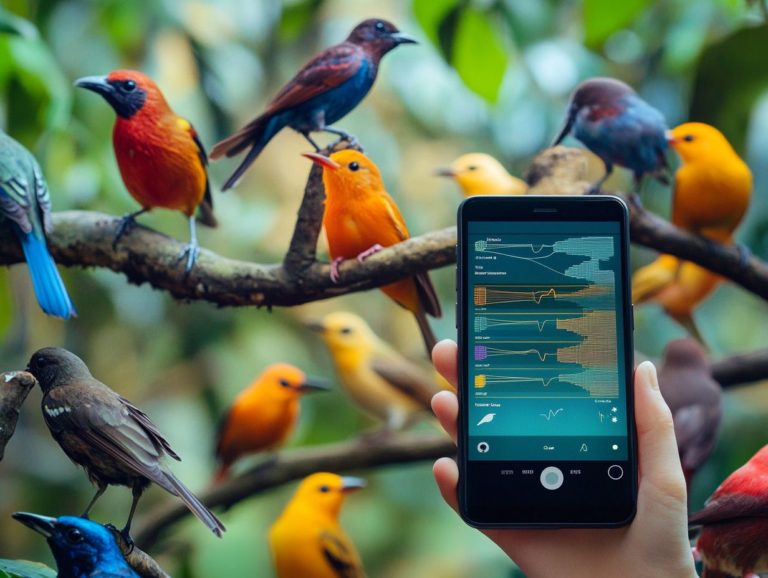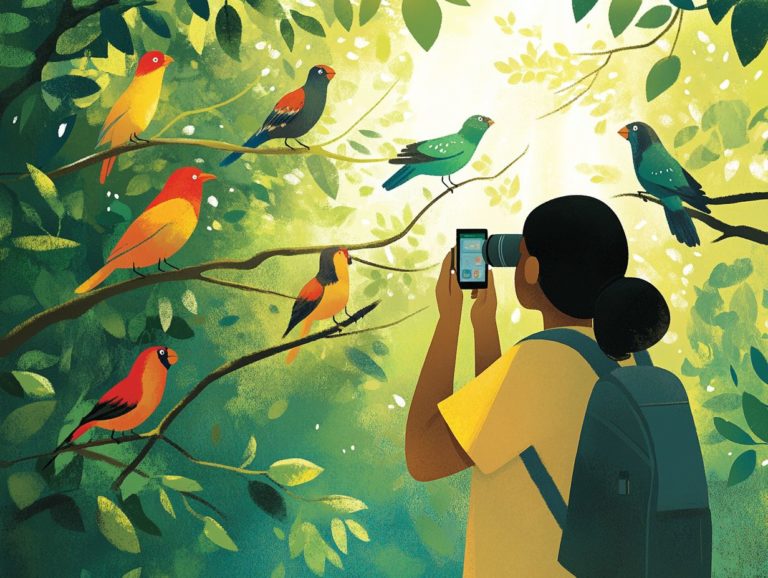The Impact of Social Media on Bird Watching
Bird watching has experienced a remarkable surge in popularity, largely driven by the influence of social media.
As enthusiasts like you connect in the digital realm, you share breathtaking photos and invaluable insights about your feathered friends. However, this online engagement isn’t without its challenges; it brings potential habitat disruptions and overcrowding to some beloved spots.
In this discussion, you will delve into both the positive and negative impacts of social media on bird watching. You’ll also discover tips for responsible engagement and contemplate what the future holds for this cherished pastime.
Contents
- Key Takeaways:
- The Positive Effects of Social Media on Bird Watching
- The Negative Effects of Social Media on Bird Watching
- How to Balance Social Media and Bird Watching
- The Future of Bird Watching in the Age of Social Media
- Frequently Asked Questions
- 1. How has social media impacted the bird watching community, especially during the Winter months?
- 2. Can social media help in identifying bird species?
- 3. How has social media improved the documentation of bird species?
- 4. Is social media affecting the behavior of birds?
- 5. Can social media be used for conservation efforts?
- 6. Unlock Your Bird Watching Journey with Social Media!
Key Takeaways:
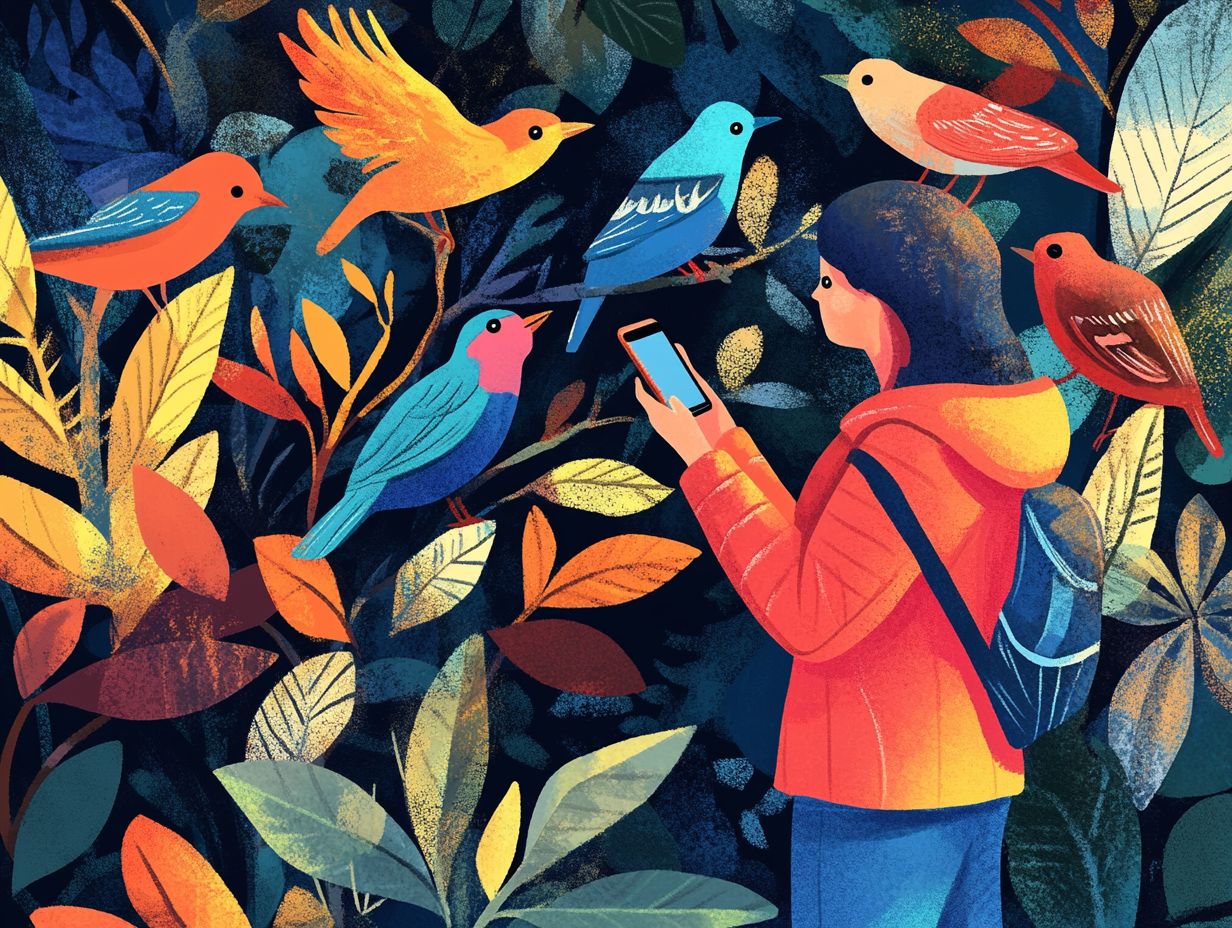
- Social media enhances the bird-watching experience by providing connections with other enthusiasts and a platform for sharing photos and information.
- However, excessive use of social media can negatively impact bird watching by causing distractions and overcrowding, disrupting natural habitats and potentially harming birds.
- To balance social media and bird watching, it is important to use it responsibly and prioritize the well-being of birds and their habitats. The future of bird watching may bring changes and challenges as social media continues to evolve.
The Growing Popularity of Bird Watching and Social Media
The surge in bird watching has built a vibrant community among wildlife enthusiasts, especially bird watchers like you. Platforms such as Instagram and Twitter have become key places to share experiences, insights, and stunning images of birds from the majestic Snowy Owl to the elusive Brown Shrike.
This growing passion for bird watching, particularly during the winter months, has enhanced mental well-being by encouraging you to engage with nature more frequently.
Social media platforms like Facebook groups and TikTok provide excellent opportunities for you to share tips, organize local meetups, and even host virtual birding events. Posting a photo or recounting your personal experiences can offer a significant mood boost, allowing you to find joy and inspiration in your surroundings.
The COVID-19 pandemic has highlighted the importance of outdoor activities as many sought solace in nature, leading to a remarkable increase in attendance at birding festivals.
These events don t just celebrate the beauty of avian life; they also nurture friendships among like-minded individuals, reinforcing the idea that shared experiences can elevate the human spirit significantly.
The Positive Effects of Social Media on Bird Watching
Social media serves as an important way for enhancing your birdwatching experience. It opens up avenues for sharing valuable knowledge, fostering conservation efforts, and showcasing the breathtaking beauty of wildlife through captivating photography and videos.
This not only enriches your appreciation of nature but also elevates awareness and engagement in environmental advocacy, allowing you to connect with a community that shares your passion.
Connecting with Other Bird Watchers
Connecting with other bird watchers has never been easier, thanks to social media platforms that allow enthusiasts like you to share experiences, insights, and photographs. This interaction cultivates a vibrant online community that actively participates in conservation efforts while promoting a deep appreciation for wildlife.
Take dedicated Facebook groups, for instance. They re perfect for connecting with like-minded individuals eager to exchange tips on local hotspots and birding techniques, which refer to various methods and strategies used for observing and identifying birds. Similarly, Instagram hashtags serve as gateways for you to showcase stunning visuals and discover fellow birders on their adventures.
These digital connections often blossom into organized birding festivals and collaborative conservation projects, fostering a sense of camaraderie that truly enhances your bird watching experience. You get the chance to meet in person, share your passion, and engage in meaningful activities that contribute to the preservation of bird habitats and species.
Sharing Photos and Information
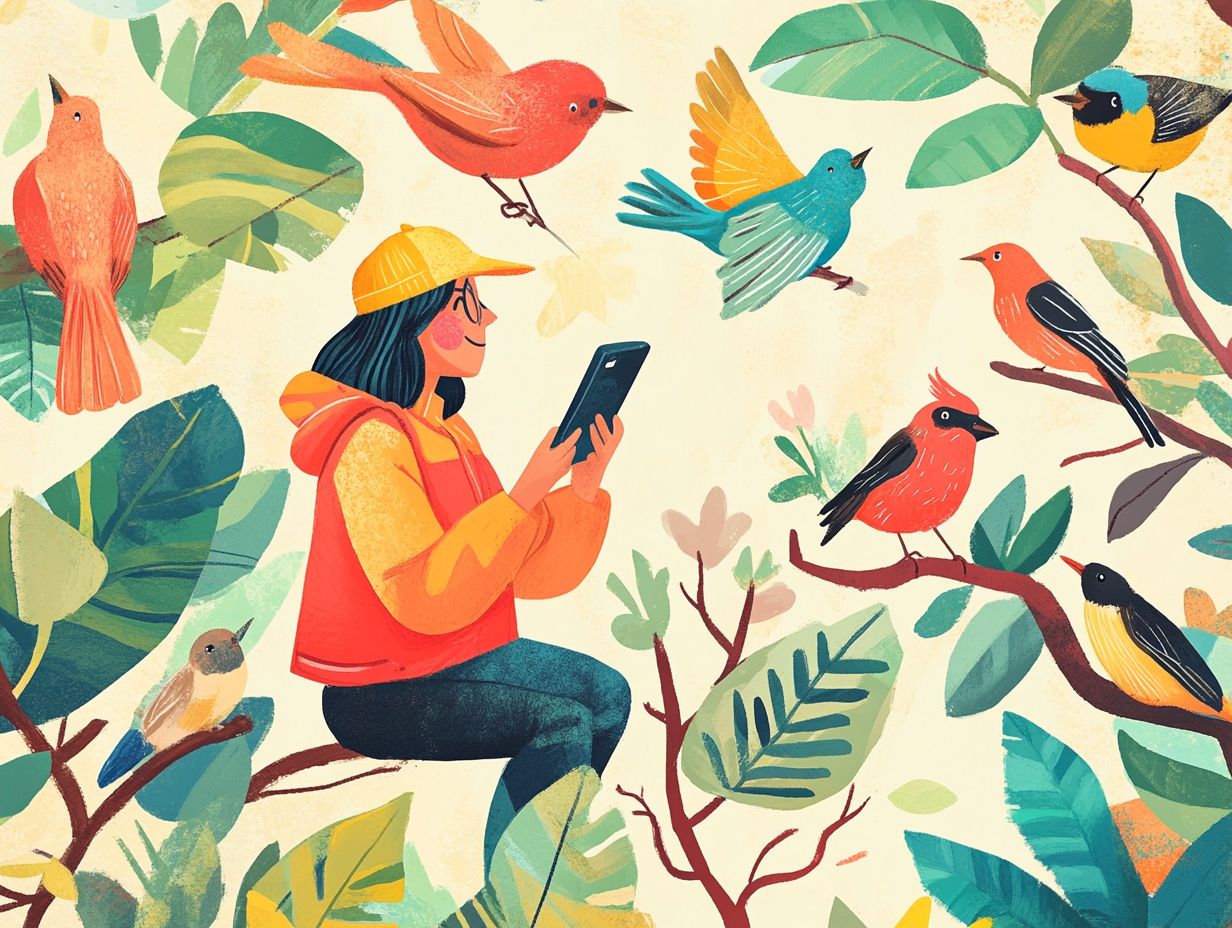
Sharing photos and insights on social media has transformed how you document and celebrate your encounters with wildlife. It gives you the power to showcase stunning images of birds and marine mammals while providing crucial location details to fellow enthusiasts.
This dynamic exchange not only fuels your passion for wildlife but also cultivates a sense of community among nature lovers. Through platforms like Instagram and Twitter, you can widely share amazing pictures and compelling stories about majestic species such as the striking Bald Eagle or the elusive Snowy Owl.
Popular hashtags like #BirdWatching and #BirdPhotographers weave a vibrant tapestry of experiences, encouraging you to venture outdoors, appreciate the beauty surrounding you, and even engage in citizen science initiatives. These platforms can spark your curiosity and inspire you to advocate for conservation efforts aimed at protecting these magnificent creatures and their habitats!
The Negative Effects of Social Media on Bird Watching
While social media has the power to enrich your birdwatching experience, spending too much time on these platforms can lead to overcrowding in popular wildlife spots, which may foster negative sentiments among local communities committed to preserving natural habitats.
Distraction and Disruption of Natural Habitats
Excessive use of social media can create distractions that disrupt the natural habitats of birds and other wildlife. As enthusiasts rush to share their experiences, they often overlook the health and safety of the ecosystems they are visiting.
Take, for example, critical breeding seasons. The noise and movement generated by eager photographers and social media users can disturb birds, driving them away from their nests and jeopardizing their reproductive success. Similarly, marine mammals like the Harbor Seal face increased stress from boat traffic and crowds attracted by social media posts, resulting in abandoned pups and higher mortality rates.
To mitigate these impacts, you should prioritize responsible behavior as a bird watcher or wildlife enthusiast. This means maintaining a respectful distance, minimizing noise, and adhering to rules for watching wildlife safely. By doing so, you can ensure that your passion for nature does not unintentionally harm it.
Overcrowding and Impact on Birds
Overcrowding at popular birding sites can have serious repercussions for wildlife, particularly as social media draws in an increasing number of bird watchers. This surge in visitors can elevate stress levels among birds and disrupt sensitive habitats.
Some bird species suffer the most from these disturbances, especially those with already limited nesting sites or breeding grounds. For example, seabirds and shorebirds may abandon their nests due to human interference, resulting in decreased reproductive success. Marine mammals, like seals and sea otters, aren’t exempt either; frequent disruptions can force them to alter their feeding habits and ultimately diminish their foraging efficiency.
It’s crucial to prioritize conservation efforts that manage visitor access and raise awareness about these issues. By embracing sustainable birdwatching practices, you can help alleviate these challenges, ensuring that both birds and marine life continue to flourish in their natural habitats.
How to Balance Social Media and Bird Watching
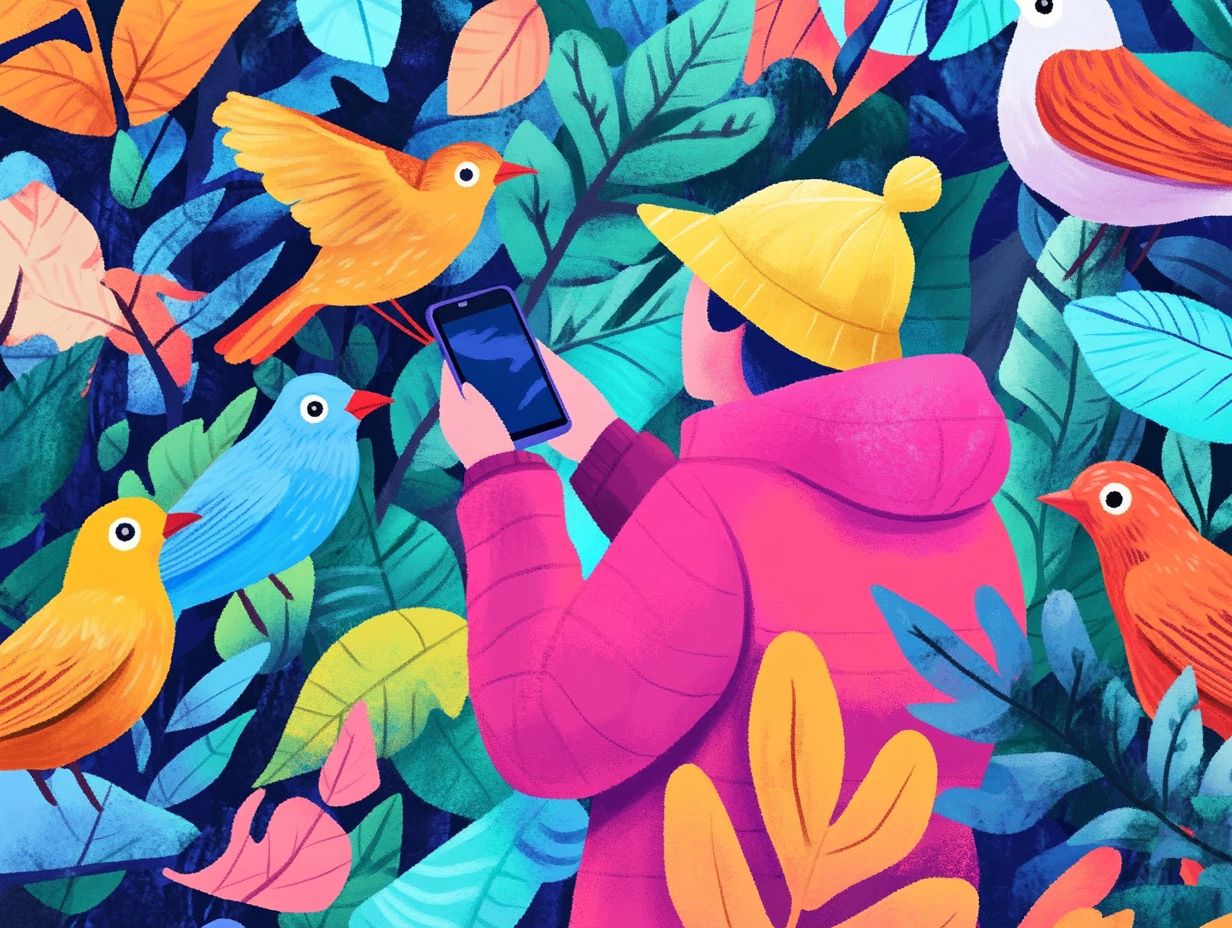
Balancing your social media engagement with the serene joys of bird watching calls for mindful practices that prioritize the well-being and safety of both you and the wildlife you wish to observe.
By doing so, you help ensure that the beauty of nature remains preserved for future generations to enjoy. Let’s work together to protect our beautiful wildlife for generations to come!
Tips for Responsible Social Media Use
Responsible social media use means adhering to guidelines that protect both wildlife and the integrity of natural habitats. This approach allows you to enjoy your passion for bird watching while promoting conservation efforts without adding unnecessary pressure on delicate ecosystems.
To further your commitment to ethical engagement, it s wise to avoid disclosing specific locations where sensitive species are found. Sharing such information can lead to too many people and disturbances in these birds’ natural environments. It’s also essential to steer clear of sharing images that might inadvertently exploit wildlife or disrupt their behaviors.
By advocating for ethical bird watching practices, you can contribute to a culture that aligns with conservation goals. Embracing low-impact viewing methods and participating in community outreach programs can help educate others about the importance of safeguarding fragile ecosystems.
The Future of Bird Watching in the Age of Social Media
As social media evolves, its impact on the future of bird watching will undoubtedly grow, opening up new avenues for wildlife enthusiasts like you to engage deeply with nature.
Get excited about sharing your experiences! You can connect with fellow bird watchers and advocate for vital conservation efforts, such as the Marine Mammal Protection Act, which not only protects biodiversity but also enhances mental well-being.
Potential Changes and Challenges
Social media changes how you experience bird watching. It also presents unique challenges, particularly when balancing the joy of sharing experiences with the impact on wildlife and their habitats. This includes critical locations for Harbor Seal and Snowy Owl populations.
This balance requires ongoing discussions and adaptations within the birding community. Organizations such as Cornell University Lab of Ornithology and the National Audubon Society play crucial roles in this effort.
As you showcase your latest sightings online, consider the rising risk of overcrowding delicate nesting areas. Promote the responsible sharing of information about sensitive ecosystems. This concern resonates with conservationists and organizations like the RSPB and the National Aquarium.
Continued education on these practices is essential for ensuring that both seasoned bird watchers and newcomers grasp the implications of their actions. Collaboration among birding enthusiasts, conservationists, and organizations like the National Audubon Society becomes crucial in fostering a unified approach.
Such partnerships can advocate for guidelines that protect avian habitats while igniting a passion for bird watching in a new generation of enthusiasts who share their experiences through photography and social media.
Frequently Asked Questions
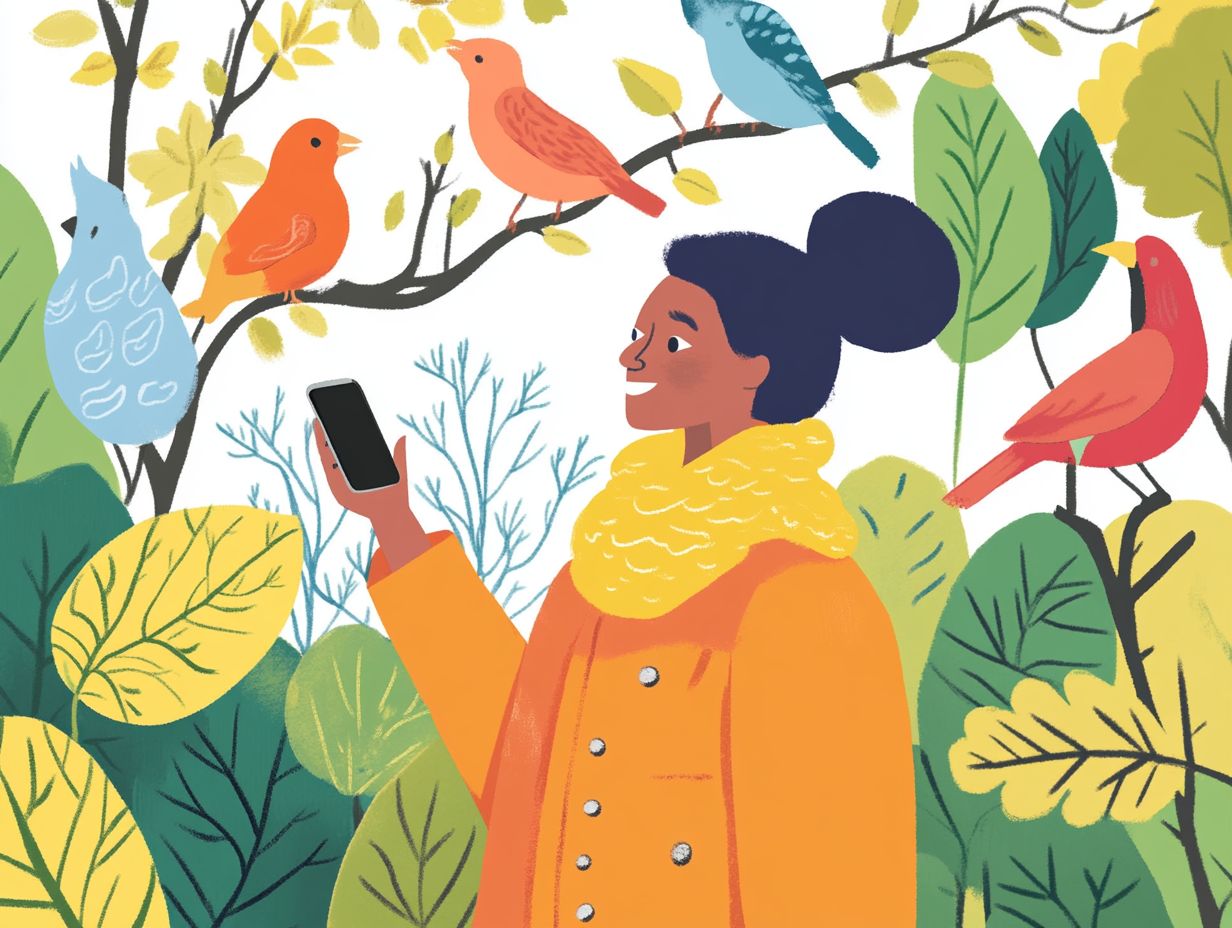
Social media has significantly impacted the bird watching community by providing a platform for enthusiasts to share their sightings, photos, and knowledge. It has also helped connect bird watchers from all over the world, creating a global community.
Yes, social media has become a valuable tool for identifying bird species. Many bird watching groups and pages allow members to post photos of birds they have spotted, and others can help identify the species.
Social media has greatly improved the documentation of bird species by providing a platform for bird watchers to share their sightings. Now, bird watchers can document their sightings in real-time, making the data more accurate and up-to-date.
There is no evidence to suggest that social media is affecting the behavior of birds. However, it is important for bird watchers to be responsible and respectful when sharing their sightings to prevent any disturbance to the birds.
Join the conversation! Share your bird watching experiences today!
Absolutely! Social media is a strong tool for conservation efforts. Bird watching groups use it to raise awareness about endangered species and organize exciting conservation projects.
6. Unlock Your Bird Watching Journey with Social Media!
Social media can be a fantastic resource for beginners. They can learn from experienced bird watchers and connect with fellow enthusiasts who share their passion.

